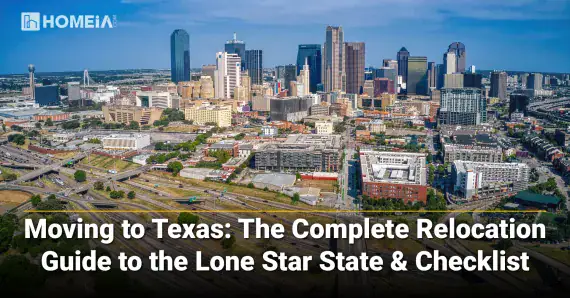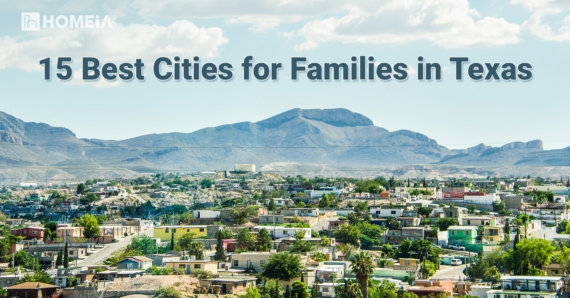5 Best Small Towns to Live in Texas (Updated 2026)
- Local Editor:Local Editor: Deba Ghosh
Published: Aug 26, 2025
- Category: Texas , City Living Guide
In an era of shifting priorities, Texas’s small towns draw individuals and families seeking a fulfilling lifestyle and rightfully so, too. Texas offers an overwhelming number of small towns which all provide quaint family-oriented communities. We have gathered the top five best small towns to live in Texas in 2025 to help you in your search for that cozy Texas lifestyle. Fredericksburg, Dripping Springs, Boerne, Wimberley, and Brenham all offer a harmonious blend of economic opportunity, strong community engagement, and a high quality of life. The guide provides the key facts—from housing to schools and culture—to help you make an informed relocation decision.
Table of Contents:
I. Methodology
Based on demographic analyses, a small town is defined as a community with a population ranging from 2,500 to 50,000 people. This population filter identifies communities that retain a genuine sense of place, distinct from sprawling suburbs. The five towns selected all fall within this range, allowing for focused examination of their unique characteristics.
- Housing & Affordability (30%): This primary driver for relocation includes median home price, average monthly rent, and affordability compared to state and national averages. It examines the crucial home-price-to-income ratio to evaluate true accessibility to homeownership.
- Safety & Community (25%): A family’s fundamental need for security. This criterion assesses violent and property crime rates and local public safety initiatives, considering community strength as a key factor in overall security.
- Employment & Economy (20%): Long-term stability essential for family growth. This metric considers the local job market, major employers, and economic base diversity to ensure resilience and opportunity.
- Education (15%): Investing in children’s futures begins with quality education. This factor evaluates public school district ratings, specialized programs availability, and access to local higher education.
- Quality of Life & Culture (10%): “Soft metrics” contributing to community character, including parks, recreational facilities, cultural attractions, and unique community events.
Data compilation utilized city-specific economic reports, federal crime statistics, real estate market trends from Zillow and Rocket, and public school performance ratings from Niche and the Texas Education Agency.
Moving to Texas: THE Complete Relocation Guide to the Lone Star State and Checklist
Moving to Texas? This all-in-one guide and relocation checklist covers cost of living, job opportunities, moving timelines, and the best cities to live. Whether you’re headed to Austin, Dallas-Fort Worth, Houston, or San Antonio, we’ll help you make an informed, confident move to the Lone Star State—y’all ready?…
II. The 5 Best: A Portrait of Texas’s Small-Town Diversity
From culturally rich hubs to burgeoning tech centers, each town offers a place for blossoming families and individuals alike looking for a cozy small town that feels just right! While sharing commitments to safety and quality of life, their individual charms and economies set them apart, allowing prospective residents to find communities aligning with their specific goals and lifestyle.
1. Fredericksburg: The Heart of Texas Wine Country

Fredericksburg, with a 2025 population of 11,889, is a cultural and economic jewel of the Texas Hill Country, masterfully blending deep German heritage with a world-class wine and tourism scene.
HOMEiA Score: 87/100
- Cost of Living: Equal to U.S. average
- Monthly Rent: $1,439
- Home price to income ratio: 7.63
- Median Home Value: $505,000
- Median Household Income: $66,200
- Housing & Affordability: Fredericksburg’s median home value of $505,000 reflects a “tourist premium” driven by outside investment for second homes and vacation rentals. With a median household income of $66,200, the housing market remains challenging for local families, though recent market cooling provides opportunities for buyers with 46-99 days on market becoming typical.
- Safety & Community: Fredericksburg maintains exceptionally low crime rates. Violent crime runs 57% below national averages, with property crime 49.5% lower than typical U.S. rates.
- Education: The Fredericksburg Independent School District maintains solid performance with 2,993 students achieving a 97.7% graduation rate. State test proficiency reaches 41% in math and 52% in reading, with average SAT scores of 1,033. The district emphasizes well-rounded student experiences beyond academics. Arguments about public education within the Texas state government could potentinally affect this data, however.
- Employment & Economy: Fredericksburg operates on a dual-economy model. Tourism drives the primary economy with 75+ wineries generating $685 million annually from 2.02 million visitors. A parallel economy in high-paying industries provides resilience, supporting locals and attracting skilled professionals.
- Quality of Life & Culture: Quality of life centers on vibrant cultural scenes celebrating German heritage. As heart of the Texas Wine Trail with over 75 wineries, the city offers small-town charm with bustling tourist destination amenities, surrounded by natural attractions like Enchanted Rock State Park. Fredericksburg is also located within the “Texas Triangle” meaning residents can easily access larger cities like San Antonio, Austin, and Houston.
The Cost of Living in Florida vs. Texas: A Comprehensive Analysis
This analysis provides the foundation for making an informed decision based on your circumstances and priorities. Whether you choose Florida’s coastal charm or Texas’s economic opportunities, both states continue to attract new residents with their unique benefits and lifestyle advantages…
2. Dripping Springs: The Hill Country’s Rising Star
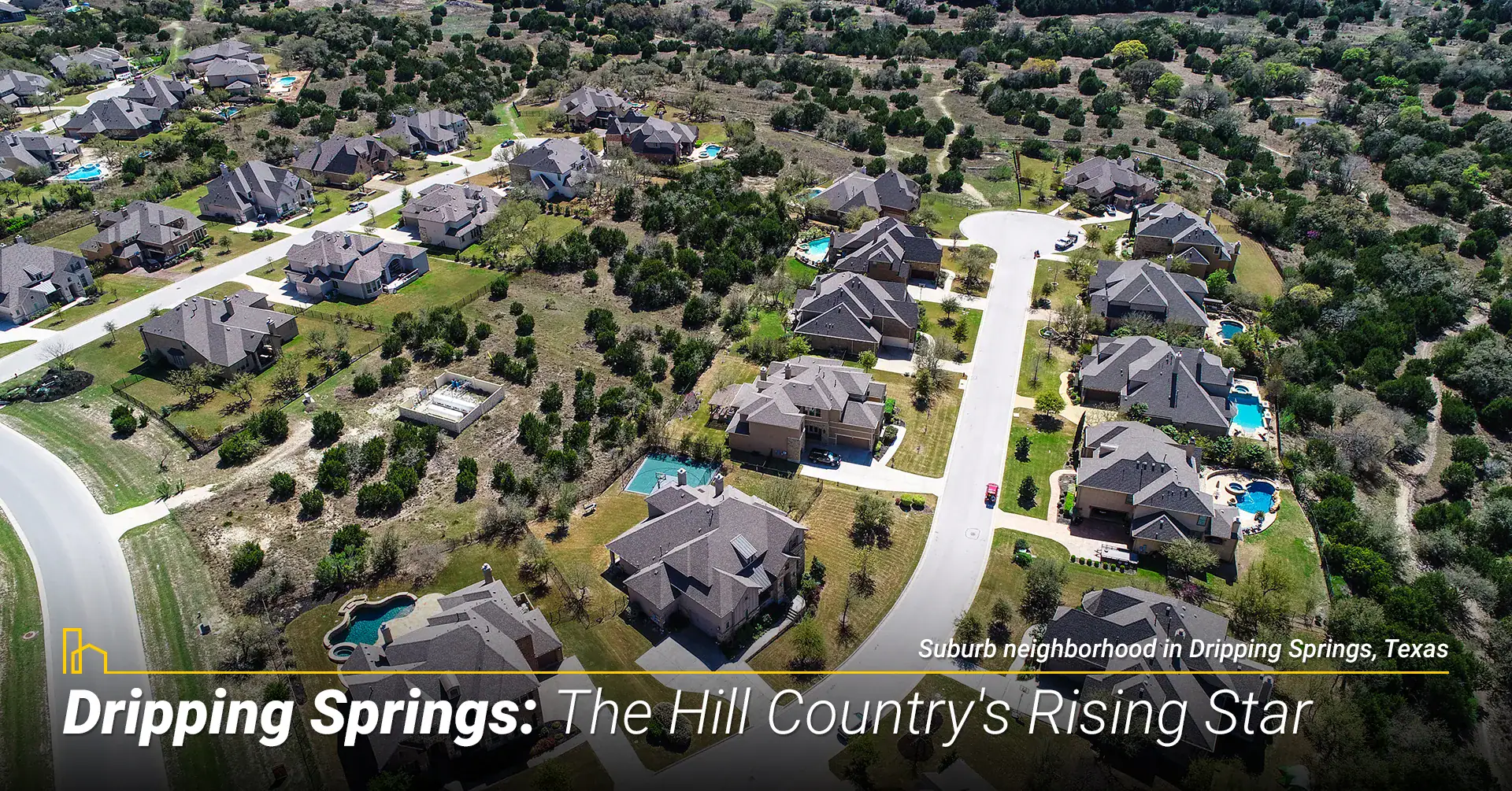
With a 2025 population of 16,500, Dripping Springs is Austin’s premier luxury exurb, offering unparalleled blend of tranquil country living and modern metropolitan conveniences, making it one of the region’s most sought-after communities.
HOMEiA Score: 88/100
- Cost of Living: 23% higher than U.S. average
- Monthly Rent: $1,985
- Home price to income ratio: 6.34
- Median Home Value: $672,500
- Median Household Income: $106,103
- Housing & Affordability: Dripping Springs’s housing market reflects extreme desirability with median home values reaching $672,500. High median household income of $106,103 results from the “Austin spillover effect,” where high-earning professionals pay premiums for serene lifestyle near city job markets, creating competitive markets for residents with significant financial resources.
- Safety & Community: Dripping Springs maintains exceptional safety records with total crime rates approximately 70% lower than national averages, ranking safer than 77% of U.S. cities. This outstanding safety performance remains a core pillar attracting families seeking luxury with peace of mind.
- Education: The Dripping Springs Independent School District earned a B rating with 8,517 students significantly outpacing state averages. Student proficiency reaches 61% in math and 72% in reading versus 49% statewide average across all subjects. Quality schools result from community high educational attainment and income levels.
- Employment & Economy: The robust local economy benefits from $106,103 median household income and diversified economic base. Many residents work remotely, reinforcing “country living with city convenience” by earning competitive Austin-level salaries without daily commutes. Major US 290 infrastructure improvements will reduce Austin commute times by 10-15 minutes.
- Quality of Life & Culture: Quality of life blends tranquil nature with sophisticated amenities. Known for natural beauty including Hamilton Pool Preserve, the area attracts wine and spirits connoisseurs through numerous wineries and distilleries. Lifestyle combines outdoor activities with upscale dining and shopping.
Recommended for you
3. Boerne: The German Heart of the Hill Country
Boerne, with a 2025 population of 24,234, masterfully preserves outstanding historical charm and natural beauty while embracing managed modern growth.
HOMEiA Score: 89/100
- Cost of Living: 18% higher than U.S. average
- Monthly Rent: $1,189
- Home price to income ratio: 6.39
- Median Home Value: $555,000
- Median Household Income: $86,838
- Housing & Affordability: Boerne’s real estate market shows median home values of $555,000 with median household income of $86,838. This balance creates more accessible housing markets for typical families compared to other high-end Hill Country towns. Managed growth attracts residents valuing quality of life while making long-term home investments.
- Safety & Community: Boerne maintains exceptional safety with violent crime rates 58.7% lower and total crime rates 33.2% lower than national averages, ranking 30% safer than other U.S. cities. Low crime results from proactive development approaches and city government prioritizing public safety and community engagement.
- Education: The Boerne Independent School District leads with six consecutive A ratings, ranking #2 among San Antonio area districts. With 10,910 students maintaining 99% graduation rates and 95% college/career/military readiness, the district justifies its reputation. Champion High School ranks fourth among traditional Texas public schools.
- Employment & Economy: The strategically managed economy attracts and retains new businesses. Employment opportunities span professional services, finance, and public administration, supporting robust $86,838 median household income with 1.7% unemployment. This forward-looking approach ensures economic stability while maintaining unique character.
- Quality of Life & Culture: Quality of life centers on historic identity. The “Hill Country Mile” features 80+ shops, restaurants, and art galleries in historic buildings. Nine parks and public library create high-quality environments blending historic charm, natural beauty, and modern civic amenities.
3 Most Affordable and Safe Neighborhoods to Live in San Antonio, Texas
With an advantageous tax structure, a low cost of living, and a warm, diversified climate, San Antonio blends financial attractiveness and cultural life, making it a dynamic and cheap Texas destination…
4. Wimberley: The Artistic Haven
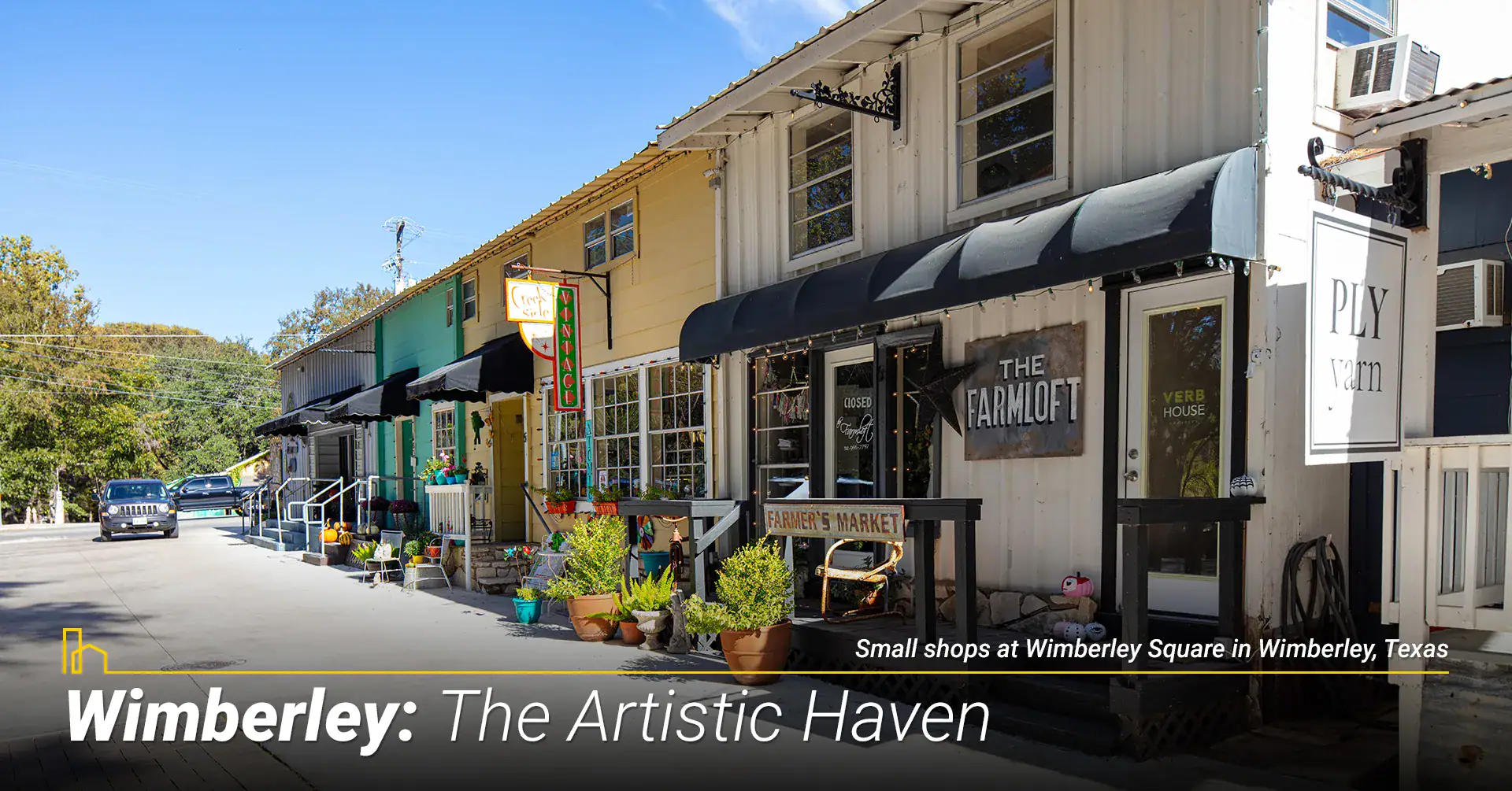
Wimberley, with a 2025 population of 2,898, is a unique small-town retreat offering the perfect blend of adventure, charm, and Hill Country hospitality.
HOMEiA Score: 91/100
- Cost of Living: 7% higher than U.S. average
- Monthly Rent: $2,000
- Home price to income ratio: 6.29
- Median Home Value: $492,700
- Median Household Income: $78,351
- Housing & Affordability: Wimberley’s housing market shows median home values of $492,700 with average rent of $2,000 monthly. The median household income of $78,351 reflects significant retiree population influence. Tourism-driven economy provides lower-paying jobs for working population, making town appeal rooted in lifestyle rather than economic opportunity.
- Safety & Community: Wimberley provides exceptional safety with violent and property crime rates 78.8% and 77.8% lower than national averages, respectively. This tranquility results from small size and strong community sense. Hays County Sheriff’s Office provides law enforcement, contributing to peaceful atmosphere attracting those seeking secure retreats.
- Education: The Wimberley Independent School District earned an A rating, ranking among top 7.4% of Texas districts with 2,700 students. The district achieves 67% reading proficiency and 48% math proficiency with favorable 16:1 student-teacher ratios, demonstrating strong community commitment to education.
- Employment & Economy: The economy thrives on creative and entrepreneurial spirit. Key industries include tourism, hospitality, and arts. The town attracts visitors supporting local businesses and artists. Without large corporate employers, it’s ideal for community-oriented environments and creative fields, with the City of Wimberley among largest employers.
- Quality of Life & Culture: Quality of life centers on bohemian, nature-focused atmosphere. The town “Square” houses unique boutiques and galleries, known for live theatre and outdoor activities. Natural attractions like Blue Hole Regional Park and Jacob’s Well, plus “International Dark Sky Community” designation, create truly unique living experiences.
15 Best Cities for Families in Texas
There are many employment opportunities throughout the state and many enjoyable communities to call home. We’ve compiled a list of 15 cities that rank high in education, affordability, and safety—areas of interest for many potential homeowners…
5. Brenham: The Classic American Small Town
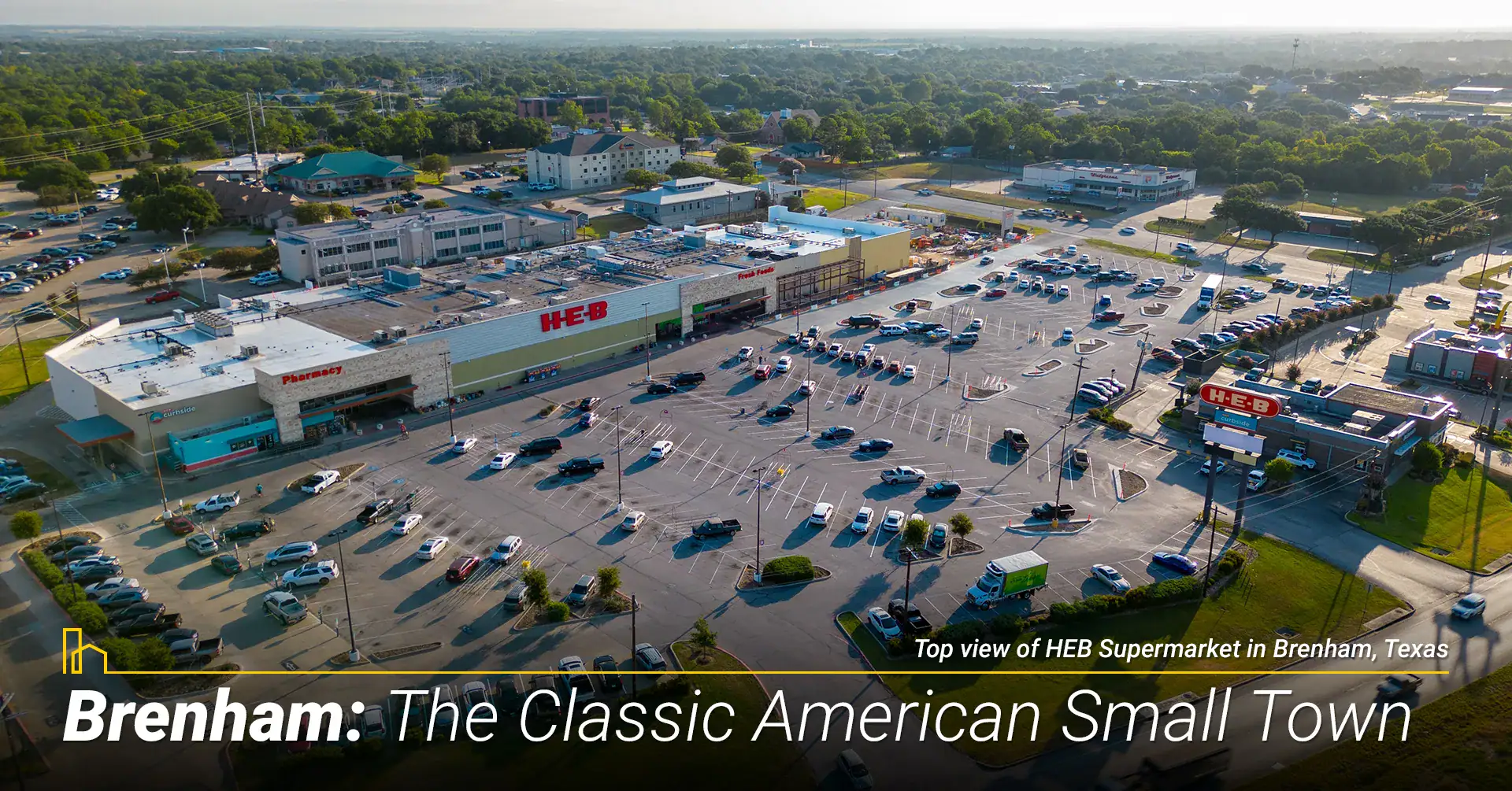
Brenham, with a 2025 population of 18,086, is a classic American small town offering grounded, affordable, historically rich lifestyle. Most famous as home to Blue Bell Creameries, one of the nation’s largest ice cream producers.
HOMEiA Score: 93/100
- Cost of Living: 18% lower than U.S. average
- Monthly Rent: $1,087
- Home price to income ratio: 5.81
- Median Home Value: $332,275
- Median Household Income: $57,207
- Housing & Affordability: Brenham’s affordability is its most compelling feature. Median home value of $332,275 provides accessibility compared to other listed towns. Median household income of $57,207 balances costs, creating favorable home-price-to-income ratios making homeownership attainable for larger demographics through traditional, local-serving economy.
- Safety & Community: Brenham maintains low violent crime rates, a major positive for families. Overall crime rates run 20.8% below national averages with notably efficient police response times averaging under 9 minutes for priority calls versus 28-minute national average. Strong community identity fosters peace and stability attractive to families.
- Education: The Brenham Independent School District provides solid performance with 4,838 students maintaining 93.7% graduation rates above the 90.3% state average. College readiness rates of 46.8% in reading and 32.4% in math support district reputation, while Blinn College offers local higher education pathways. Texas A&M University is also located in nearby College Station.
- Employment & Economy: Brenham’s economy remains stable and diversified, based on foundational industries serving local communities. Largest employment sectors include healthcare, educational services, and retail. The economy supports through famous Blue Bell Creameries employer. Reliance on stable core sectors provides economic resilience and predictable job markets attractive to families seeking long-term security.
- Quality of Life & Culture: Quality of life centers on deep historical roots and local identity. Famous for Blue Bell Creameries, the town offers charming historic downtown with unique shops, art galleries, and restaurants. Culture focuses on genuine small-town experiences with rich historical narratives, numerous local festivals, and proximity to Washington-on-the-Brazos historical sites.
Recommended for you
III. Comparative Analysis & Strategic Considerations
Choosing which small town lifestyle type is for you might prove difficult. Hill Country towns offer sophisticated, affluent lifestyles with exceptional schools and recreational amenities. However, this comes at significant costs, particularly in Dripping Springs and Fredericksburg, where home prices often disproportionate local incomes. Brenham’s primary strength lies in affordability, making homeownership accessible for broader demographics, though offering fewer high-paying, white-collar opportunities.
Comparative Data Table:
| Town | 2025 Population | Median Home Value | Monthly Rent | Median Household Income | School Rating | Primary Economic Driver |
|---|---|---|---|---|---|---|
| Fredericksburg | 11,889 | $505,000 | $1,439 | $66,200 | B+ | Tourism & Wine |
| Dripping Springs | 16,500 | $672,500 | $1,985 | $106,103 | B | Austin Commuter |
| Boerne | 24,234 | $555,000 | $1,189 | $86,838 | A | San Antonio Commuter |
| Wimberley | 2,898 | $492,700 | $2,000 | $78,351 | A | Arts & Tourism |
| Brenham | 18,086 | $332,275 | $1,087 | $57,207 | B+ | Manufacturing & Agriculture |
Is it Worth Investing in Texas Real Estate in 2025?
Should you be concerned, or is it still worth investing in Texas real estate this year? Below, we’ll cover some of the things you need to know to answer that question. This advice will help you make the best choices so your profits can be as high as possible.
Strategic Considerations:
a) Financial Preparation: Texas has no state income tax, often offset by higher property tax rates at 1.81% statewide average. Essential to budget for these taxes adding hundreds monthly. Research local real estate beyond online data and consult local experts.
b) Education and Schools: District-wide ratings provide good starting points but examine individual campus ratings. The Texas Education Agency provides detailed information on school performance and accountability ratings. You could also consider private schools in the area or located in nearby metropolitan areas.
c) Practical Logistics: Texas law requires new residents obtain state driver’s licenses within 90 days and register vehicles within 30 days. Most states have a Department of Motor Vechicles. Note that Texas requires you to complete these tasks through two different agencies and does not have a typical “DMV.”
d) Infrastructure Investment: Historic state and federal funding transforms Hill Country infrastructure with $3.3 billion in broadband improvements and $20 billion in water infrastructure through 2047. Yet, severe flooding is possible in these areas and has proven difficult for some of these communities. It is important to consider whether your future home is nested within a flood plain, as this could also result an extra expense—flood insurance.
Conclusion: Your Small-Town Texas Future Awaits
This report highlights the best of small-town Texas in 2025. Each community offers unique value propositions, from luxurious Dripping Springs and culturally rich Fredericksburg to affordable Brenham. The state’s appeal drives from vibrant economy and high quality of life. This guide helps families find communities aligning with budgets and lifestyles. By understanding each town’s unique character, potential residents make strategically sound and emotionally fulfilling choices for their futures.
The 10 Cheapest Places to Live in Texas (updated)
They say everything is bigger in Texas, and for good reason. From some of America’s largest and active metropolitan cities to the host of recreational activities for people of all ages across the state to the many bigger-than-life personalities who call Texas home, Texas has plenty to offer for everyone. here’s the list of 10 lowest cost of living places…
FAQ: Most Common Questions about Best Small Towns in Texas
- How does Texas’s tax structure affect affordability?
While Texas has no state income tax, it relies on local property taxes averaging 1.81% statewide. This creates trade-offs where higher take-home pay balances potentially higher property costs. - What are some popular neighborhoods?
City vibes often determine by neighborhoods. Research specific subdivisions and developments within each town to find best fits for lifestyle and budget preferences. - How should I evaluate a school district?
Use Texas Education Agency (TEA) ratings as starting points but examine individual campus ratings as they vary significantly within districts. - What is the real-world safety outlook?
These cities consistently maintain low violent crime rates. However, property crime requires everyday vigilance. Security comes from active community participation. - What is the lifestyle like given the Texas climate?
Texas summers are hot, but communities adapt with outdoor-focused lifestyles. Many recreational opportunities center around natural spaces and spring-fed swimming areas staying cool year-round. - What does the job market look like?
The Texas job market varies by region. Austin provides tech opportunities, Dallas-Fort Worth offers corporate headquarters, Houston centers on energy and healthcare, while small towns focus on tourism, agriculture, and local services. Commuting to work from a smaller town to the more metropolitan areas is common for many Texans, however.
I’m an avid writer who often focuses on real estate, business consulting, economics and finance. Before leading business and investment advisory services for over 25 years, I got a Ph.D. in Economics and taught at the university level. I have lived in Houston, Texas and Chicago, Illinois for a combined 35 years. I also traveled to 40+ states on business and pleasure, and love writing about the great cities and small towns across the US.
HOMEiA is a city guide site where visitors can find detailed information about communities of interest. HOMEiA’s City Guides, created in partnership with local writers and editors, are curated lists of the best, safest, and most affordable places to live. The guides feature the HOMEiA Score, a proprietary index that rates communities on such factors as housing costs, education, employment, etc.
HOMEiA.com aims to be the premier site for people planning to relocate, providing them with insightful content and connecting them with skilled real estate professionals.
We also empower real estate professionals to establish or strengthen their web presence by highlighting their experience, knowledge and achievements. If you’re selected to join our list of certified real estate professionals, you will distinguish yourself from your peers — and earn HOMEiA’s support.
If you believe in HOMEiA’s mission, please share our website with others.











































































































































